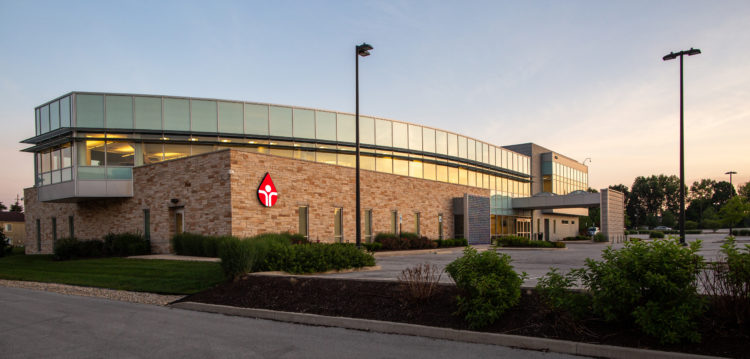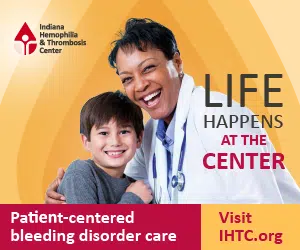The scene is familiar: Your child is playing when they suddenly fall.
They get up and dust off, hardly fazed by their freshly skinned knee or a bump to the head. For most kids, this happens routinely with very little setback. But for some kids — like those with a bleeding disorder such as hemophilia or von Willebrand disease (VWD) — this interruption could require emergency attention.
What is a bleeding disorder?
A bleeding disorder is a condition that affects the body’s natural ability to stop bleeding (form a clot). Clotting allows the body to heal properly. However, in a person with a bleeding disorder, the ability to clot is slowed or stopped. It can result in significant blood loss or internal pooling of blood, which can cause major complications.
Who has bleeding disorders?
Males and females are both affected by bleeding disorders, as are all populations across the globe.
How will a parent know if their child has a bleeding disorder?
Easy bruising is an early symptom found in toddlers learning to walk when they fall or bump into objects. If you notice easier-than-normal bruising, frequent nosebleeds, or heavy menstrual bleeding in your child, an evaluation is recommended. Other concerns might arise with prolonged bleeding after surgery or dental procedures.
How can bleeding disorders cause health problems?
Visible blood loss needs to be addressed, but it’s typically what happens inside the body that can cause some of the most severe long-term problems for people with bleeding disorders. Repeat injuries and stress to joints and muscles can cause vessels to break and then blood to collect in these areas. This can cause considerable pain and loss of mobility if not addressed properly. Lower impact sports like baseball, swimming, golf or tennis are recommended for people with bleeding disorders for this reason.
What do people with bleeding disorders need to do to stay healthy?
Depending on how severe the condition is, bleeding disorder patients might need to take medication prescribed by their doctor to replace or increase their clotting factor. This helps prevent or reduce complications if injured or in an accident. They should also always wear a medical ID noting their condition and who to call. If they are in an accident or need emergency surgery, healthcare providers need to be aware to provide appropriate care.
Can you get a bleeding disorder?
Bleeding disorders are largely genetic conditions (meaning, you are born with it). About one third of hemophilia cases occur without a documented or known family history.
Does a bleeding disorder affect lifespan?
People with bleeding disorders can have a normal lifespan if they use preventative therapies and treat bleeding episodes when they occur. Getting tied into a federally recognized hemophilia treatment center (HTC) like the Indiana Hemophilia & Thrombosis Center is key to successful outcomes. The IHTC has all kinds of medical specialties available who have specific knowledge of bleeding disorders. HTC staff treat and teach patients how to care for themselves and advocate for their own health throughout their lifespan, as well as provide education and events that involve siblings, parents, grandparents, babysitters, school nurses, and more.
If you or your family member has a bleeding disorder, consider joining the IHTC community. Visit us online at www.ihtc.org.

Brought to you by the Indiana Hemophilia and Thrombosis Center.







